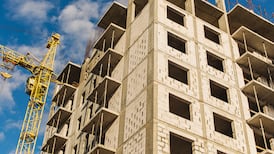Number 48 Doughty Street - close to Russell Square Underground - is a four-storey, Georgian house of imposing aspect, the house of a man of substance who stands tall among his peers as Charles Dickens did when, in April, 1837, he moved his wife and infant son into the small private street with porters in mulberry livery to open and close the gates which stood at each end. A week later, his publishers threw a party to celebrate the success of the serialisation of Pick- wick Papers - the income from which allowed him rent Doughty Street. He was 27 years old and the toast of London's literary set.
In a room downstairs visitors may pick up the quill - used by the man himself - and attempt to emulate the flourish with which he ended his letters. Next-door, in the video room, is the chest-high desk he stood at while working as a clerk. Lift the heavy lid and the timeless creak takes you right back to A Christmas Carol.
Upstairs is Mary Hogarth's Room. Mary was the 17-year-old sister of Dickens's wife and a frequent visitor. But one evening, she collapsed here and died in Dickens's arms. Four years later, in The Old Curiosity Shop, she was reincarnated as Little Nell. Dickens travelled widely giving public readings, including to the US where he complained that, as there were no copyright laws, he didn't get paid as much as he was worth. One of his popular readings was from King Lear, banned from the London stage lest it give rise to comparison with the madness of George the Third.
In Dickens's dressing room is the portable, velvet-covered desk he had made specially for readings and in the Mary Hogarth Room is his travelling mirror, as well as his sumptuous court suit and sword - an indication, if ever there was one, that he had come a long way from his impoverished childhood when his father was imprisoned in the Marshalsea Debtors' Prison. A wooden grill from the Marshalsea can be seen downstairs in the basement.
The hardships of those days were not forgotten, however, for they provided him with much of the material that went into his books. In a glass case upstairs is displayed a jar similar to the ones he used when, during his father's incarceration, he worked in a blacking factory, sticking labels on blacking bottles.
An inventory Dickens had drawn up before moving into Doughty Street proved invaluable when recreating furnishings as they had been in his day. Minute paint scrapings from the drawing room showed the exact shade of lilac he had the walls painted - having taken a dislike to the existing green dado.
On the desk in his study is the china monkey which no one was allowed to move. Also on the desk he kept a green cup for fresh flowers. It was in this study that he completed The Pickwick Papers, wrote most of Oliver Twist and all of Nicholas Nickleby.
The dining room is comfortably furnished, with the magnificent Spanish mahogany sideboard - a favourite of Dickens' - dominating the room. Over it is a large mirror - he was very fond of mirrors - and by candlelight, this room must have glowed. Between the windows is a grandfather clock from the offices of Moses Pickwick, who ran a coach service between London and Bath, a route which Dickens often used when a young reporter.
Catherine Dickens gave birth to another two children while in Doughty Street but two years after moving there, her husband's prosperity took them to a larger house of "excessive splendour" close to Regent's Park. Though they would not remain so, Catherine and Charles Dickens were happy in 48, Doughty Street, the house which has now become the headquarters of the Dickens Fellowship.
Further information from: 0044 20-74052127








